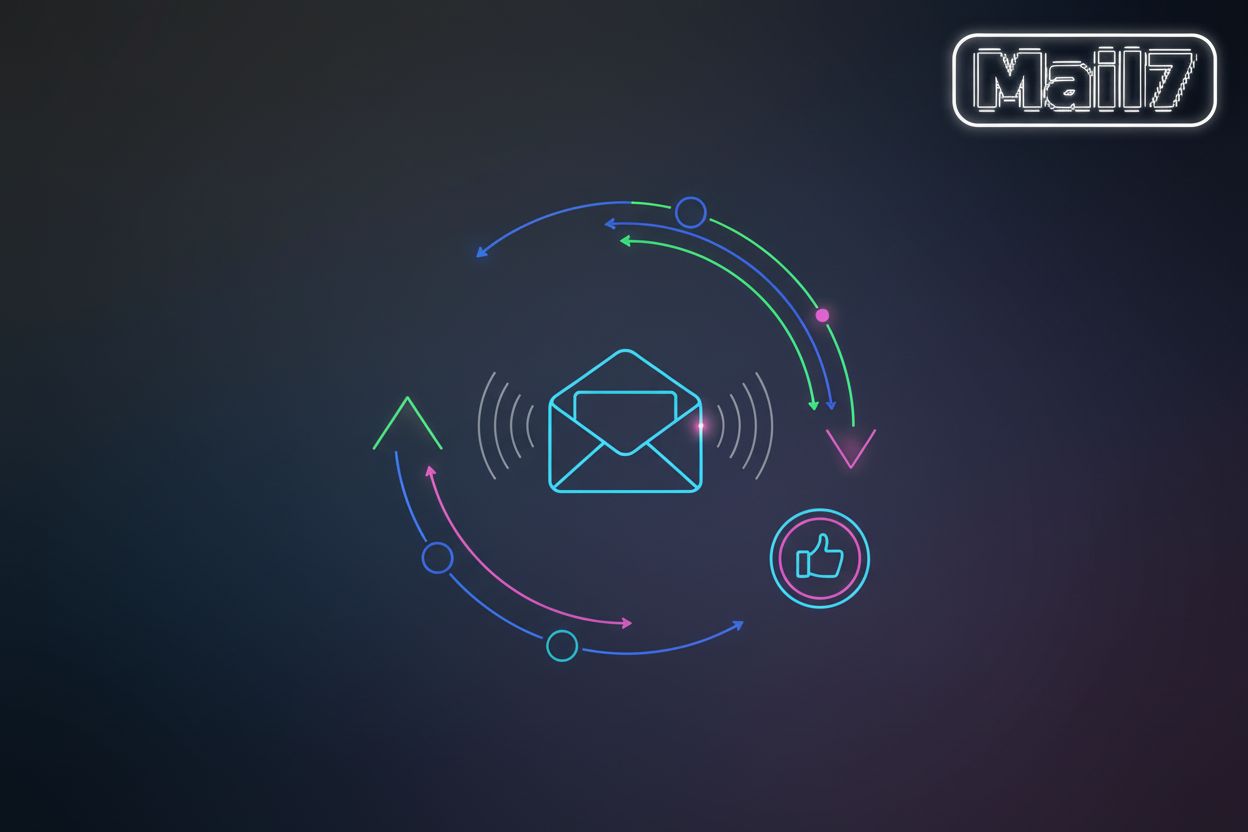Fort Knox for Your Inbox: Proactive Email Defense Against Temporary Accounts
TL;DR
The Disposable Email Dilemma: Why Reacting Isn't Enough
Think about it: how many times have you signed up for something with a throwaway email? It's easy, right? But for businesses, it's a real headache.
Disposable email addresses are more than just a minor annoyance; they're a growing problem. They can lead to:
- Freemium abuse: Imagine a SaaS company offering a free trial. Bad actors can easily create multiple accounts with temporary emails to extend their free access indefinitely. This not only drains resources but also skews usage metrics.
- Skewed analytics: When users sign up with disposable emails, it becomes impossible to accurately track customer behavior and engagement, leading to flawed marketing strategies and misallocated resources. For example, a retail business might misjudge the effectiveness of a promotion if many sign-ups are from temporary accounts.
- Security Risks: Fraudsters can use disposable emails to mask their identities while engaging in malicious activities such as creating fake reviews or launching phishing attacks. This makes it difficult to trace the origin of such attacks.
Relying on blacklists of disposable email providers is like playing whack-a-mole. These services are constantly creating new domains to evade detection. A static list quickly becomes outdated, leaving businesses vulnerable. To combat this, we need to shift from reactive measures to a proactive defense. In the next section, we'll explore advanced techniques for identifying disposable email addresses before they cause problems.
Building a Proactive Defense: Advanced Detection Techniques
Ever wonder if that "new customer" is really new, or just someone with a fresh temp email? Yeah, it's a headache. Let's dive into how to spot those sneaky disposable addresses.
Think of an api (Application Programming Interface) as a bouncer for your website. An api is essentially a set of rules and protocols that allows different software applications to communicate with each other. When someone signs up, the api checks their email against a bunch of criteria before they even get in. It's not just a simple blacklist lookup – it's way more sophisticated.
- Analyzing email attributes: apis can dissect an email address, looking at things like domain age, syntax, and even whether it contains suspicious keywords. For instance, an email like "[email protected]" is a pretty big red flag.
- Dynamic risk scoring: Forget static rules; we need dynamic assessment. Points are assigned based on various factors. This can include:
- Domain reputation: Is the email domain new, or has it been associated with spam or abuse in the past?
- IP address reputation: Where is the signup coming from? Is the IP address known for malicious activity?
- Email format: Does the email address look unusually generated or contain common disposable email patterns?
- Historical usage: Has this email address been used for fraudulent activities before?
- Provider reputation: Is the email provider known for offering disposable or temporary email services?
If it hits a certain threshold, boom – extra verification required.
- Balancing security with user experience: No one wants to jump through hoops, so you gotta avoid false positives. Maybe the user is legit, but just signed up quick from a coffee shop wifi. Tools like Kickbox offer api endpoints for detecting disposable email addresses, helping to strike this balance.
It's not just about the email itself, but what the user does. Are they signing up from an ip address that's been flagged for abuse? How fast are they filling out the form? These are things to keep in mind.
- Tracking signup velocity: A sudden surge of new accounts from the same ip? Suspicious. Especially if they're all using similar-looking email addresses. That's a bot, almost guaranteed.
- Identifying disposable email patterns: Disposable email domains often lack a history. These addresses don't show up in data breach records and lack long-term usage patterns. The absence of such historical data can be a strong indicator that an email address is temporary and potentially being used for malicious purposes.
- Combining data is key: Domain intelligence plus behavioral data is way more accurate than either alone. It's like having two detectives working the same case.
Think about a healthcare provider offering online consultations. A fraudster might use a disposable email to schedule multiple appointments under different names, racking up consultation fees with no intention of paying. Behavioral analysis – like tracking appointment booking speed and unusual IP addresses – could flag this activity fast. For instance, a rapid succession of appointment bookings from a single IP, all using disposable emails, would be a significant red flag.
So, by combining real-time api checks with behavioral analysis, you're building a pretty solid wall against those pesky temporary emails. Next, we'll look at how to unmask the providers behind these emails.
Integrating Detection into Your Workflow: Practical Implementation
Integrating disposable email detection into your workflow? It's not just a good idea; it's kinda essential these days, especially if you're tired of cleaning up fake accounts, am I right? Let's get real about how to actually do this.
First things first, you gotta choose your tools wisely. There's APIs, libraries, and even managed services out there. It's like picking the right wrench for the job – accuracy, speed, and cost all matter.
- APIs: These are great for real-time checks during signup or form submissions. You send an email address to the API, and it tells you if it's disposable. Good for immediate validation.
- Libraries: If you prefer more control or want to integrate detection directly into your application's codebase, libraries offer pre-built functions you can use. This might require more development effort but offers flexibility.
- Managed Services: These are often more comprehensive solutions that handle the detection and sometimes even the blocking or flagging for you. They can be easier to set up but might offer less customization.
Okay, so you're detecting disposable emails. Now what? Don't just sit there! Automate how you respond based on how confident you are in the detection.
- Conditional Logic: If the tool is super sure it's a disposable email, block it. But if it is just a little suspicious, maybe challenge with a phone verification.
- Extra Verification: Phone or sms verification is great for a lot of things these days. It's like adding a lock after you see a red flag. Other options include CAPTCHAs or requiring additional profile information.
- Logging and Monitoring: Track those disposable email attempts. It gives you data to see if you're getting better at catching them and where they're coming from.
- What to log:
- Number of disposable emails detected per day/week/month.
- Specific disposable email domains detected.
- Source IP addresses of signups using disposable emails.
- The confidence score of the detection.
- The action taken (blocked, challenged, allowed).
- How to monitor:
- Create dashboards that visualize key metrics.
- Set up alerts for sudden spikes in disposable email usage.
- Generate regular reports to track trends and identify new threats.
- What to log:
Think of a financial institution. They might use a higher confidence level for blocking accounts, because the stakes are higher. A gaming platform, on the other hand, might be more lenient, opting for extra verification to avoid frustrating new players.
And remember, it's an ongoing battle. Keep tweaking your approach.
Testing and Refinement: Ensuring Accuracy and Minimizing Disruption
Okay, so you've put in the work to detect those pesky disposable emails. Now, how do you really know if it's working? Time for testing, right?
- Craft a test suite: Mix a bunch of real email addresses with some known disposables. Think of it like a "stress test" for your detection system. Make sure it catches the bad ones but doesn't accidentally block your grandma's legit email.
- Sources for known disposables:
- Public lists: Many security researchers and organizations maintain lists of known disposable email domains. A quick search can often yield these.
- Disposable email provider websites: Visit popular disposable email services and note their domain names.
- Generated lists: You can create variations of common disposable email patterns to test your system's robustness.
- Sources for known disposables:
- User feedback is gold: Keep an eye on those "false positive" reports. If users are complaining their legitimate email is being flagged, you've got a problem. Address it fast, or you'll lose real customers. For instance, a healthcare platform needs to be super careful not to block patients trying to access their records.
- Refine those thresholds: Don't set it and forget it! Regularly review how sensitive your detection is. What works for a fintech app might be overkill for a small retail store.
It's not just about blocking emails; it's about making sure you're not accidentally kicking out real users.
Measuring the Real Impact: Quantifying Your Success
You've implemented your disposable email detection, you're testing and refining—but how do you know if it's actually making a difference? It's time to measure the real impact.
- Track Key Metrics:
- Reduction in disposable email signups: This is the most direct measure. Compare the number of disposable emails detected before and after implementing your solution.
- Decrease in fraudulent activity: Are you seeing fewer fake reviews, less abuse of free trials, or a reduction in other malicious activities that were previously linked to disposable emails?
- Improvement in analytics accuracy: Can you now more reliably track user behavior and engagement because you're filtering out temporary accounts?
- Cost savings: Quantify the resources saved by preventing freemium abuse, reducing customer support for fake accounts, and avoiding the costs associated with fraud.
- Set Benchmarks and Goals: Before you start, establish baseline metrics. What's your current rate of disposable email signups? What's your target reduction? Having clear goals will help you assess progress.
- Regular Reporting: Create a system for regularly reporting on these metrics. This will help you demonstrate the value of your disposable email defense strategy and identify areas for further optimization.
By focusing on these measurable outcomes, you can ensure your efforts are not just a technical exercise but are genuinely contributing to a more secure and efficient business.
The Future of Email Defense: Staying Ahead of the Curve
The disposable email game is always evolving, right? What worked last year might be useless now.
- Decentralized platforms are popping up, making it harder to track who's behind those temporary emails. Think crypto, but for emails.
- AI-powered detection is gonna be crucial, spotting patterns that humans miss. Imagine an ai constantly learning new tricks to catch those throwaway accounts.
- Sophisticated bots are getting better at mimicking real user behavior, making it harder to tell them apart from actual humans, which is a bummer.
Staying ahead requires constant learning. It's a never-ending cycle, but hey, that's what makes it interesting, yeah? By staying vigilant and adapting your strategies, you can keep your inbox—and your business—fortified against the ever-changing landscape of temporary email threats.







